Basic Jewellery Making
This basic jewellery making article is a wonderful place to begin to learn all about the art of working with beads. It is written by Jenny Lawson, a very talented bead artist. It explains types of beading, tools needed, and even includes an easy project tutorial, perfect for a beginner.
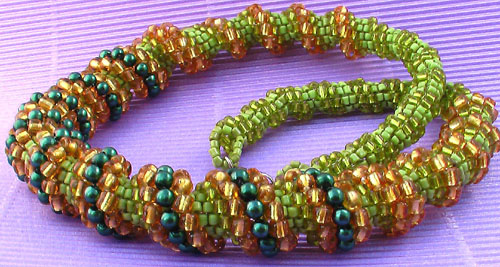
Click on any of the sections below to jump around on this page, or scroll down to read the entire article.
1. Types of Basic Jewellery Making
2. Bead Types
3. Tools and Materials Required
4. Netted Star Tutorial
5. About the Author
Types of Basic Jewellery Making
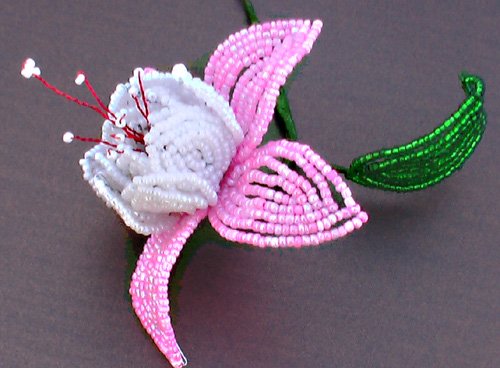
Stringing: beads of all sorts of types and colours are strung onto a beading thread using pleasing designs and colours.
Beadweaving: this is sometimes known as seed beading. This includes a wide variety of weaves, including herringbone weave, brick stitch, peyote, netting, pondo stitch, right angle weave and square stitch. With the exception of two-needle right angle weave, these all require a needle and thread, and you weave in a similar way to sewing. Two needle right angle weave is usually not done with needles at all, a stiff thread is used, and the beads can be strung onto it without the use of a needle. There are also a huge range of spirals that can be made in all of the above weaves, as well as a few particular to spirals only. These include: Spiral rope, double spiral rope, triple spiral rope, flat spiral, Russian spiral, Dutch spiral, herringbone spiral, embellished right angle weave, Cellini spiral, Aussie spiral, netted spiral and African Helix.
Loom Beading: seed beads are woven into fabric using a loom. Some very intricate designs can be made.
Wire work and wire wrapping: This is where wire is used to created pleasing shapes and designs using wire.
Victorian Beading and French Beading: these methods ore often used to make beaded flowers. Wire is used, as well as seed beads. Victorian beading, also known as Continental Beading, is worked horizontally with both ends of the wire going through the row of beads. French beading is worked vertically with rows of beads worked around a central row of beads.
Chainmail: also known as chain maille. This is created by joining jump rings into intricate patterns.
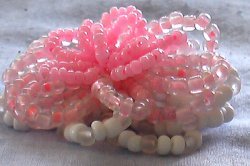
What is a Bead?
Basic jewellery making usually includes beads. Basically a bead is a small decorative object that has at least one hole in it for threading. Beads have been used for jewellery for hundreds of thousands of years.
Beads can be made from all sorts of things, including: natural materials- such as bone, coral, seashells and nuts. They can also be made of synthetic materials such as: ceramics, glass, crystal and plastic.
Bead Types
Seed Beads: seed beads are the very tiny beads used in basic jewellery making and beadweaving. These are usually measured in either mm or aught sizes, eg. 11/0, which means number of beads per inch.
There are three main types of seed beads available:
- Japanese: these have a cylindrical shape and are very uniform in size. They have a large hole.
- Czech: these have more of a rounded shape with smooth edges. They’re sometimes described as being donut shaped.
- Chinese: these are the cheapest type of seed beads, but can be very uneven in shape and size. They are usually more Czech-shaped.
Bugle beads: these are long cylindrical beads, made in a range of lengths.
Shaped beads: these are made in any sorts of shapes.
Faceted beads: these have been cut and polished to give lots of reflection and shine.
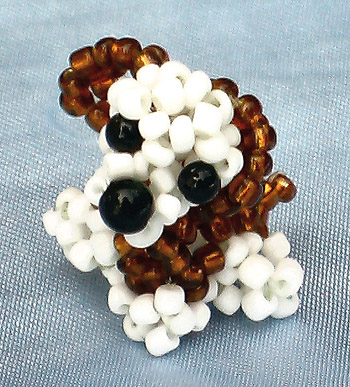
Tools and Materials Required for Basic Jewellery Making
The tools needed for basic jewellery making vary with what is being made and the technique used.
Some basic tools and materials are:
Thread: some available types are: tigertail, aculon, monofilament thread and Nymo.
Crimp beads: these are small soft metal beads with a large hole that are used to squash the thread together to hold the finding in place.
Findings: these are all the components used in basic jewellery making to make things into jewellery, includes clasps, earring hooks and key rings.
Pliers: these are need for many things in basic jewellery making, including closing crimp beads. Two are usually needed to close jump rings.
Specific tools and materials:
Stringing: generally you don’t need much at all. Just your beads and thread, you’ll also need a couple of crimp beads and a couple of jump rings. You’ll need pliers to close the crimp beads and jump rings. You’ll also need clasps or other findings for your basic jewellery making, depending on what you’re making,
Beadweaving: For this you’ll need fine thread, beading needle, seed beads. You’ll also need the crimp beads and other findings the same as with stringing, depending on what you’re making.
Loom Beading: loom, thread and seed beads, and findings as required.
Wire work and wire wrapping: The wire can be craft wire, artistic wire, copper wire, or sterling silver wire. They are available in different gauges that measure the thicknesses. You will need pointy nosed pliers, and round nosed pliers to create spirals and loops. Wire cutters are required to cut the wire.
Victorian Beading and French Beading: Seed beads and wire are required for these. Pointy nosed pliers will be needed. If it’s going to be a flower, you’ll need a stiffer wire for the stem and some floral tape to wrap it.
Chainmail: This just requires lots of jump ring available in different sizes and gauges, as well as 2 pairs of pliers to close the rings. You’ll also need the findings as required.
A
Very Simple Bead weaving Project for a Beginner
Netted
Star Tutorial
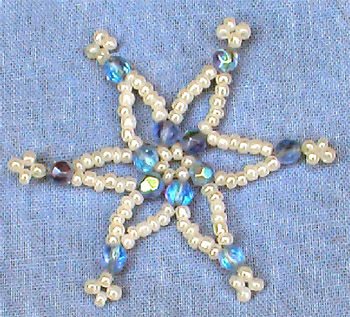
Materials Needed for
this basic jewellery making project:
- 4 mm crystals, or other beads
- size 10/0 seed beads
- stopper bead, any colour, will be removed later
- fine fishing line, approximately 80 cm
- beading needle, or other fine needle
1. Thread
the fishing line onto
the needle
2. Tie on a stopper bead. A stopper bead is a bead
the same size
or
smaller than the smallest bead you are using.
String through it twice to hold it in
place.
3. Add 6 seed
beads, 1 crystal and
1 seed bead.
4. Go back
through the crystal,
and pull tight.
5. String on
another 6 seed beads,
a crystal, and this time 4 seed beads.
6. Go back through
the first seed
bead you strung on, through the same way you came from originally. Then back through the
crystal.
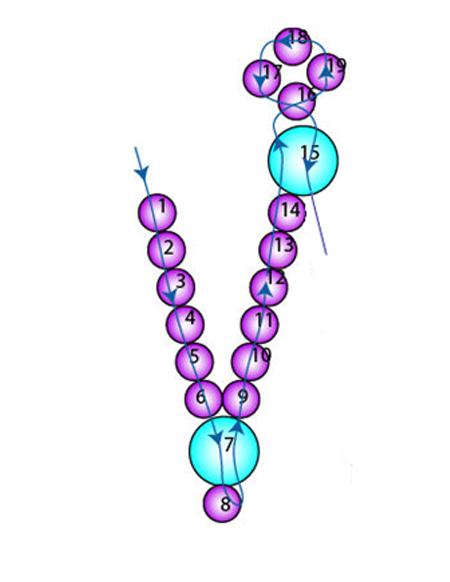
7. Continue in this manner, adding 6 seed beads between each section, crystals next to each end, and ends alternating between a single seed bead, and a 4 seed bead circle.
8. This should form a zigzag pattern with the 4 bead circles on one end, and the single beads on the other, as in the diagram.
9. Stop when you have 6 of each type of ends. 12 points all together.
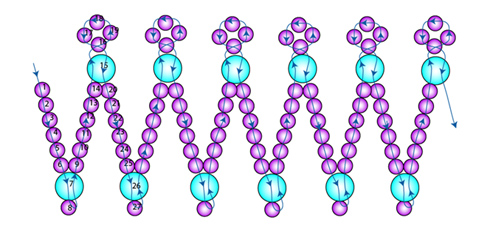
10. The thread should now be coming out of the crystal, in readiness for the 6 seed bead centre. Now instead of starting a new 6 bead section, just string back through the first section, all the way through the first 6 seed beads, the crystal, and the end seed bead.
11. You should now have a rough circle. String through the next single seed bead, at the next point, then the next. Continue through them all. Then go through them all again.
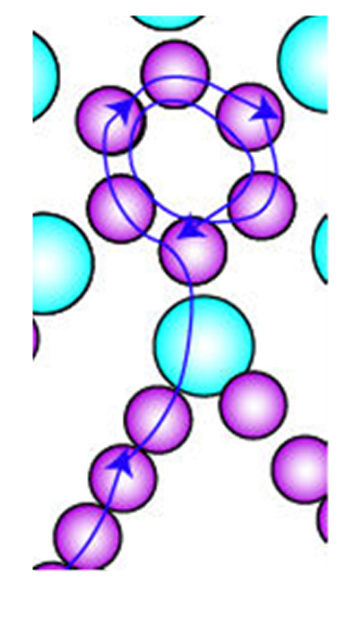
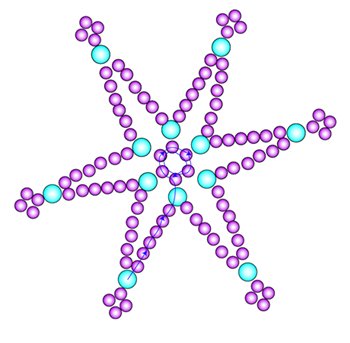
12. Tie off, and thread through a few beads. Remove stopper bead, tie, and thread through a few beads.
About the Author
My name is Jenny Lawson, and I live in Australia. I have been doing all sorts of crafts for as long as I can remember. I especially love crochet and quilling. But my absolute favourite has to be jewellery making and beaded flowers, including chain mail, wire work, French Beading, Victorian beading, and many other styles. There are many different kinds of bead weaving, and as far as I know I’ve done almost every type there is.
I have two websites and a blog I invite you to visit:
Craft Cove - mainly for jewellery and gifts
Flower
Cove - for flowers and hair accessories
MY BLOG:
Jewellery
from Craft Cove - Everything about handcrafted jewellery.
I talk about jewellery I've made, jewellery I will make, and
stuff I'm making now. I also talk about problems I've had
with them, the highlights, and anything else I can think of.
I also list some free tutorials.
I would like to thank Jenny for her wonderful article on beading. If you would like to contribute a tips and techniques article, please contact me. It is a wonderful way to share your knowledge and let others know about your craft website or blog.
Would you consider a small donation?
You will receive my craft ebook as a thank you!
Every little bit helps! If you are enjoying this site, would you consider making a small donation? I use the extra money to help with the cost of craft supplies! With any $5.00 donation or more, you will receive my 650 page ebook full of 178 craft tutorials from this site. Thank you for your consideration!
Click here to learn more about the book, and to make a donation.
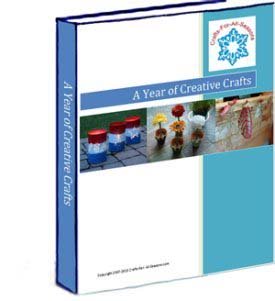







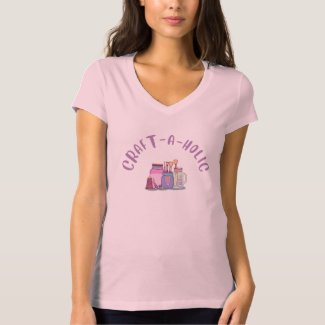
Facebook Comments
Have Your Say About What You Just Read! Leave Your Comments or Questions Below.